The Streak…
My two flights yesterday went smoothly but 24 hours later, Friday night’s scratchy throat had turned into a full-blown head cold. Last night my nose was running like a sieve, I was badly congested, I had a nasty headache, my throat hurt, I had sinus pain, and of course, my teeth hurt too. Sleep was very hard to come by. I was up every 20 minutes or so sneezing and coughing. I did sleep well from 2:38am until 4:08am. I eventually got up for good at 7am and began working on finishing this blog post. I had written most of it on the plane on Saturday; as I type now at 7:26am,, I need to work on the images.
Here are my NFL picks: Denver (I do not like Pretty Boy) and Seattle.
You gotta love head colds. I am feeling a bit better right now. Heck, things could be a lot worse. My good friend James Shadle has been in the hospital for a week with bi-lateral pneumonia; please join me in wishing him a s speedy recovery so that he can begin taking folks out to Alafia Banks in Tampa Bay for some great Roseate Spoonbill photography. Get well soon Froggie!
This post marks 54 days in a row with a new educational blog post, a record by far that should be extended for at least another week or two. Or not. 🙂 To show your appreciation, we ask that use our B&H and Amazon affiliate links for all of your B&H and Amazon purchases. Please check the availability of all photographic accessories in the BIRDS AS ART Online Store. We sell only what I use and depend on. We will not sell you junk. We know what you need to make creating great images easy and fun. And we are always glad to answer your gear questions via e-mail.
You can find the following items in the store: Gitzo tripods, Mongoose M3.6 and Wimberley heads, plates, low feet, and accessories, flash brackets, , Delkin e-film Pro Compact Flash Cards, LensCoat products, and our unique line-up of educational materials including ABP I & II, Digital Basics, Site and Set-up e-Guides, Canon and Nikon Camera Users and AF e-Guides, and MP-4 Photoshop video tutorials among others.
We would of course appreciate you using our B&H and Amazon affiliate links for all of your B&H and Amazon major gear, video, electronic, household, and personal purchases. For the photographic stuff mentioned above we would of course great appreciate your business.
Thanks and enjoy today’s blog post! BTW, more than 8 solid hours went into the creations of this blog post 🙂
|
This landing Brown Pelican was photographed with the Canon EF 200-400mm f/4L IS USM Lens with Internal 1.4x Extender (hand held with the internal TC in place at 320mm) and the Canon EOS-1D X. ISO 800. Evaluative metering +1/3 stop: 1/2500 sec. at f/5.6 in Av mode. Central Sensor/AI Servo–Rear Focus AF on the top of the bird’s head active at the moment of exposure. Click here to see the latest version of the Rear Focus Tutorial. Click on the image to see a larger version.
|
300 f/2.8L IS or 200-400 f/4L IS with Internal TC/Which is the best lens?
During the week before I left for San Diego I received several e-mails asking straight up, if you had to choose between the two, which is a better lens for bird photography, the Canon EF 300mm f/2.8L IS II USM ($7,099) or the Canon EF 200-400mm f/4L IS USM Lens with Internal 1.4x Extender ($11,299).
My initial thoughts were that the answer depended on what you photographed and where you lived. But after the San Diego trip I reached a definitive conclusion. Before we get there let’s take a look at some of the determining factors.
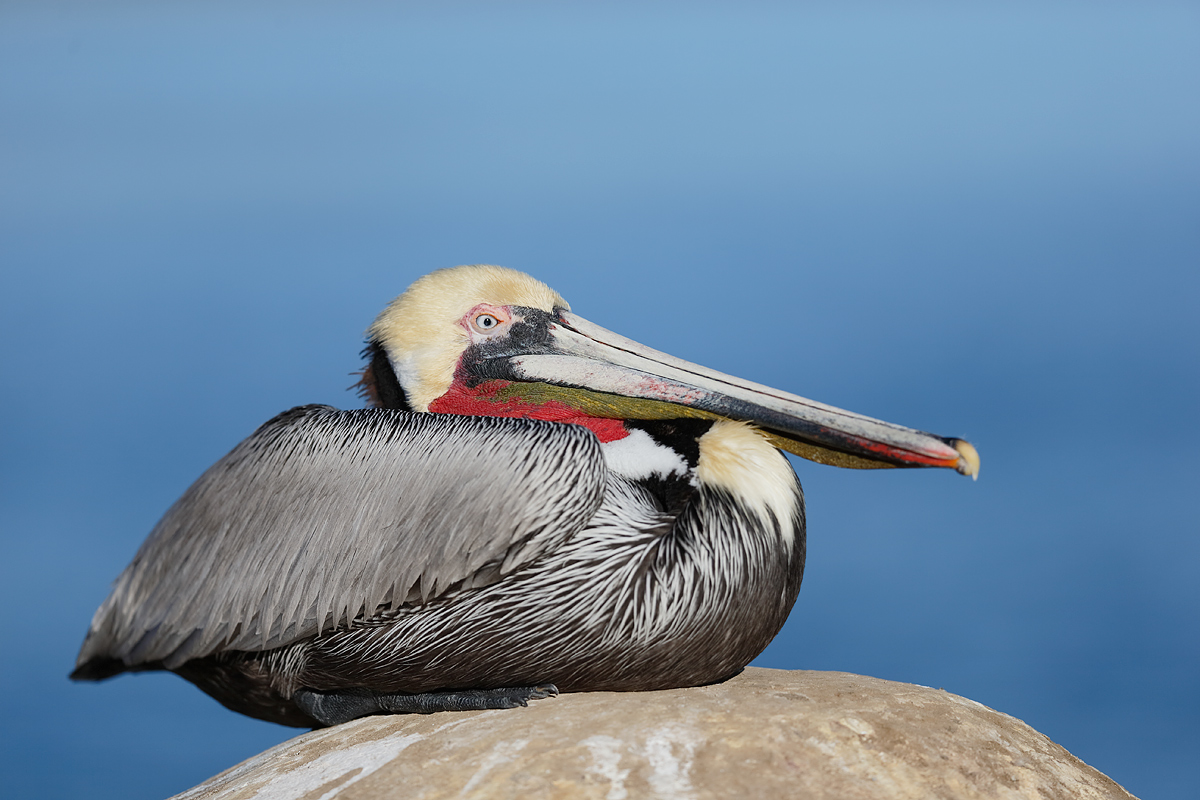
|
|
This resting Brown Pelican image was created with the Canon EF 300mm f/2.8L IS II USM lens and the Canon EOS-1D X. ISO 200. Evaluative metering +1/3 stop: 1/? sec. at f/? Manual mode. Note: the original ISO 400 was a typo :(. ISO 200 is now correct… Central Sensor/AI Servo–Rear Focus AF on the top of the bird’s head active at the moment of exposure. Click here to see the latest version of the Rear Focus Tutorial. Click on the image to see a larger version.
Image Questions: #1: judging by the depth-of-field what do you think the aperture was for this image? |
Cost: the 300 f/2.8 II costs more than $4,000 less than the 200-400. Advantage: 300 II.
Weight: the edge here goes to the 300 II that tips the scales at 5.19 pounds as compared to the heftier 200-400 that weighs 7.98 pounds. That is more than 2 1/2 pounds less than the 200-400. And the 2-4 is only only about 2/3 pound lighter than the 600 f/4L IS II. Advantage: 300 II.
Ease of traveling by air: again the edge here clearly goes to the 300 II as its somewhat smaller size and its lighter weight makes it easier to pack and to transport. Advantage: 300 II.
Ease of hand holding: again the advantage clearly goes to the 300 II as its somewhat smaller size and its lighter weight makes it easier to hand hold for flight, action, and static subject photography. Advantage: 300 II.
Speed: as an f/2.8 lens the 300 II has it all over the 200-400 f/4 when it comes to light gathering capabilities. Advantage: 300 II.
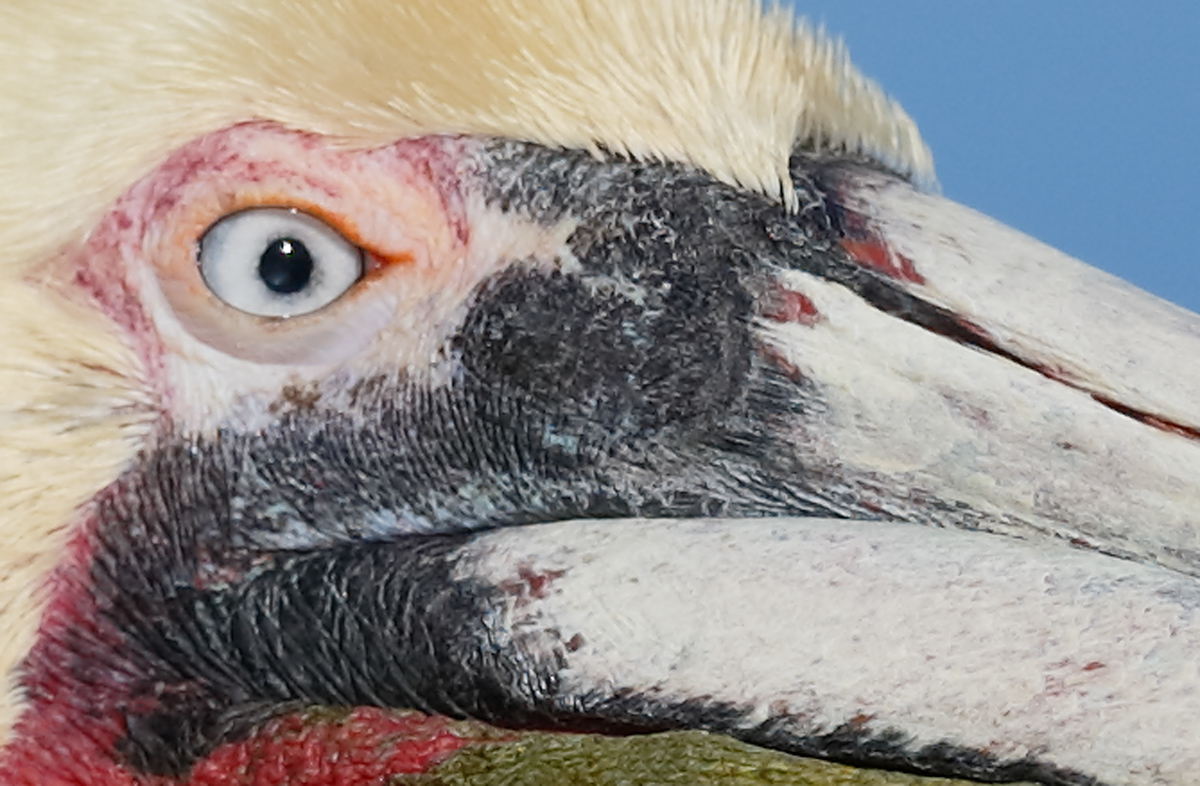
|
|
This is an unsharpened 200% crop of the image above that was created with the 300 II at an unknown aperture.
How would you judge the sharpness? |
Sharpness: I’d have to rate both of these amazing lenses as superbly sharp with the edge going to the 300 as just a bit sharper than the 200-400. That said each of the two lenses in question is remarkably sharp with or without teleconverters. Do note that the 300 II can be used with either the 1.4X III or the 2X III TC. From where I sit there is no reason to use the 2X TC III TC with the 200-400. Engaging the TC and then adding an external 1.4X III TC is the equivalent of having a 1.96X TC in place. When working with the 200-400 and an external TC mounted the best strategy for getting back to 280-560 is to disengage the internal TC. Valuable time will be lost by removing the external TC. You must of course take the time to remove the external should you wish to work between 200 and 400mms.
Slight Advantage: 300 II.
Maximum Reach
The 300 II/2X TC gets you out to 600mm at f/5.6. The 200-400 with both the internal and extrenal TCs in place gets you out to 798mm.
Advantage: 200-400.
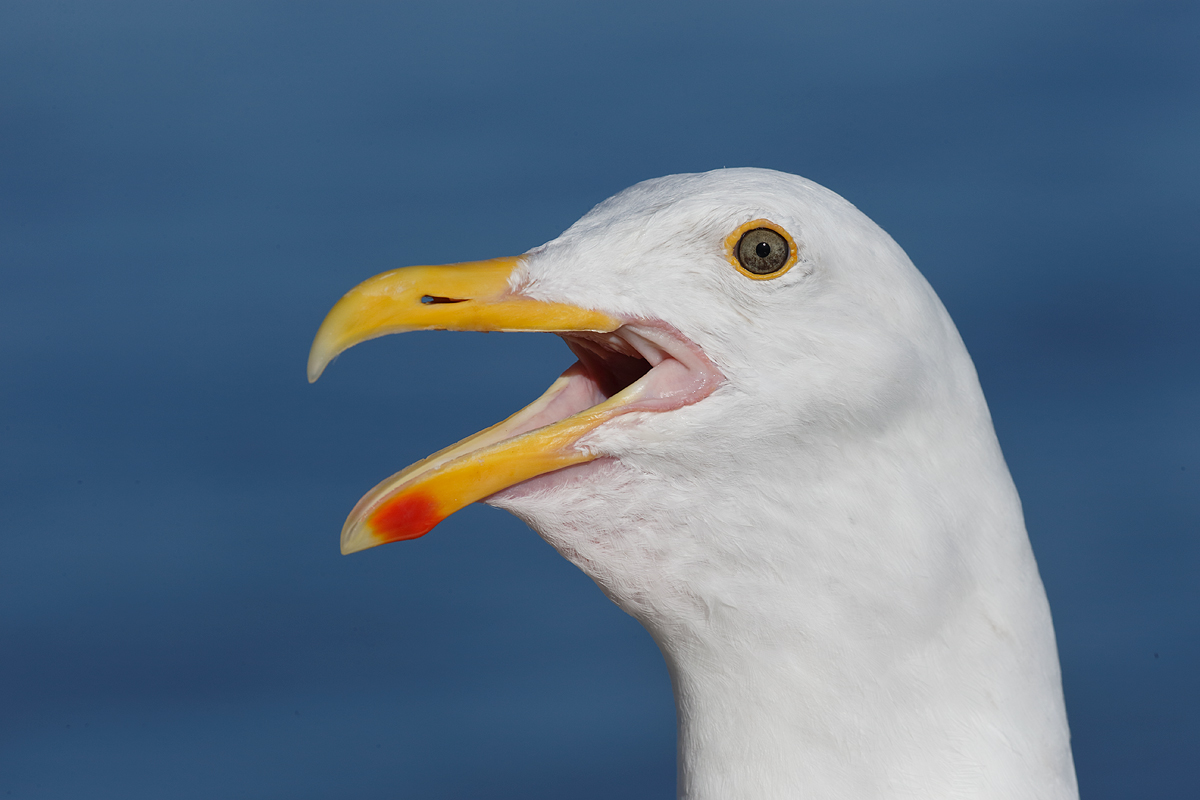
|
|
This screaming Western Gull image was created with the Canon EF 200-400mm f/4L IS USM Lens with Internal 1.4x Extender (hand held with the internal TC in place at 560mm) and the Canon EOS-1D X. ISO 400. Evaluative metering -1/3 stop: 1/1000 sec. at f/13 in Manual mode. Central Sensor/AI Servo–Rear Focus AF on the bottom of the gape active at the moment of exposure. Click here to see the latest version of the Rear Focus Tutorial. Click on the image to see a larger version.
|
The Trump Card
Versatility: the 300 II is quite a versatile lens. With the 1.4X III TC you have a very nice 420mm f/4 lens. Adding the 2X III TC yields a sharp, hand hold-able 600mm f/5.6 lens. That gives you three focal lengths: 300, 420, and 600. With the 200-400 as it comes out of the box, you have of course a 200-400mm f/4 zoom lens that can, by simply engaging the internal 1.4X TC be almost instantly transformed into at 280-560mm f/5.6 zoom lens. That gives you coverage from 200-560mm. And by adding an external 1.4X TC with the internal TC engaged, you have a lethally sharp 392-784mm f/8 lens. So with an extra TC in your pocket you will have a 200-784mm zoom lens at your disposal. With both TCs in place, I will most often be working on a tripod. And yes, the Mongoose M3.6 is perfect for the 200-400 f/4L IS with Internal Extender. Huge Advantage: 200-400.
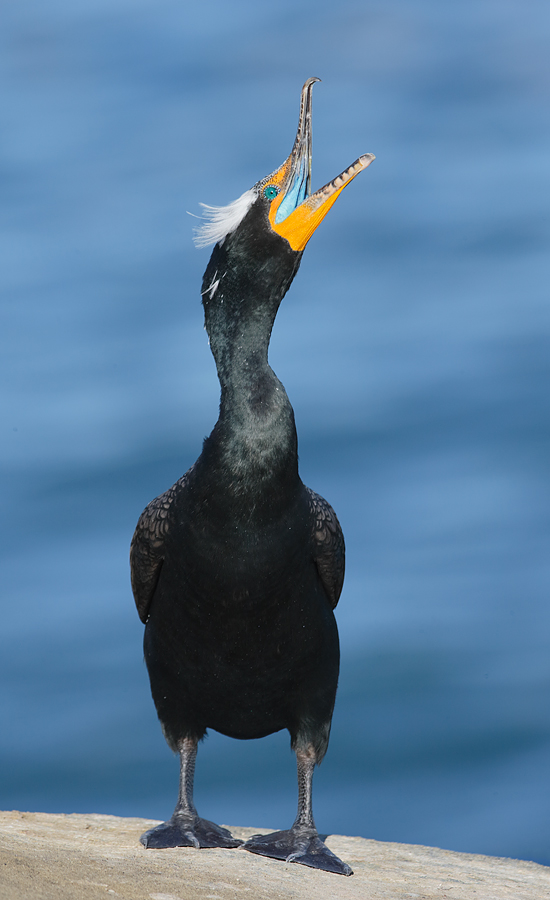
|
|
This yawning Double-crested Cormmorant was photographed with the Gitzo 3532 LS carbon fiber tripod, Mongoose M3.6 head, the Canon EF 200-400mm f/4L IS USM Lens with Internal 1.4x Extender, a Canon 1.4x EF Extender III (Teleconverter) (hand held with the internal TC in place at 728mm), and the Canon EOS-1D X. ISO 400. Evaluative metering +2/3 stop: 1/500 sec. at f/9 in Av mode. One sensor up from the Central Sensor/AI Servo–Rear Focus AF on the bird’s neck active at the moment of exposure. Click here to see the latest version of the Rear Focus Tutorial. Click on the image to see a larger version.
|
My Conclusions
Though the 300 f/2.8L IS II lens came out ahead in 6 of the 8 categories and though it is a superbly sharp lens that served me very well on fairly recent trips to Japan and the Southern Ocean, I must give the overall nod to the 200-400 with Internal TC because of its amazing versatility and its great maximum reach. That said, be assured that in the hands of a competent nature photographer the 300 II along with both TCs is also a very deadly weapon….
The turning point in my thinking process was that in San Diego when I had a choice between the 300 II and the 200-400 I always reached for the 2-4….
If you are motivated to purchase either one of these great lenses because of what you have learned here, please do use either our B&H or Amaazon affiliate links; doing so will not cost you one penny more and would be greatly appreciated by yours truly.
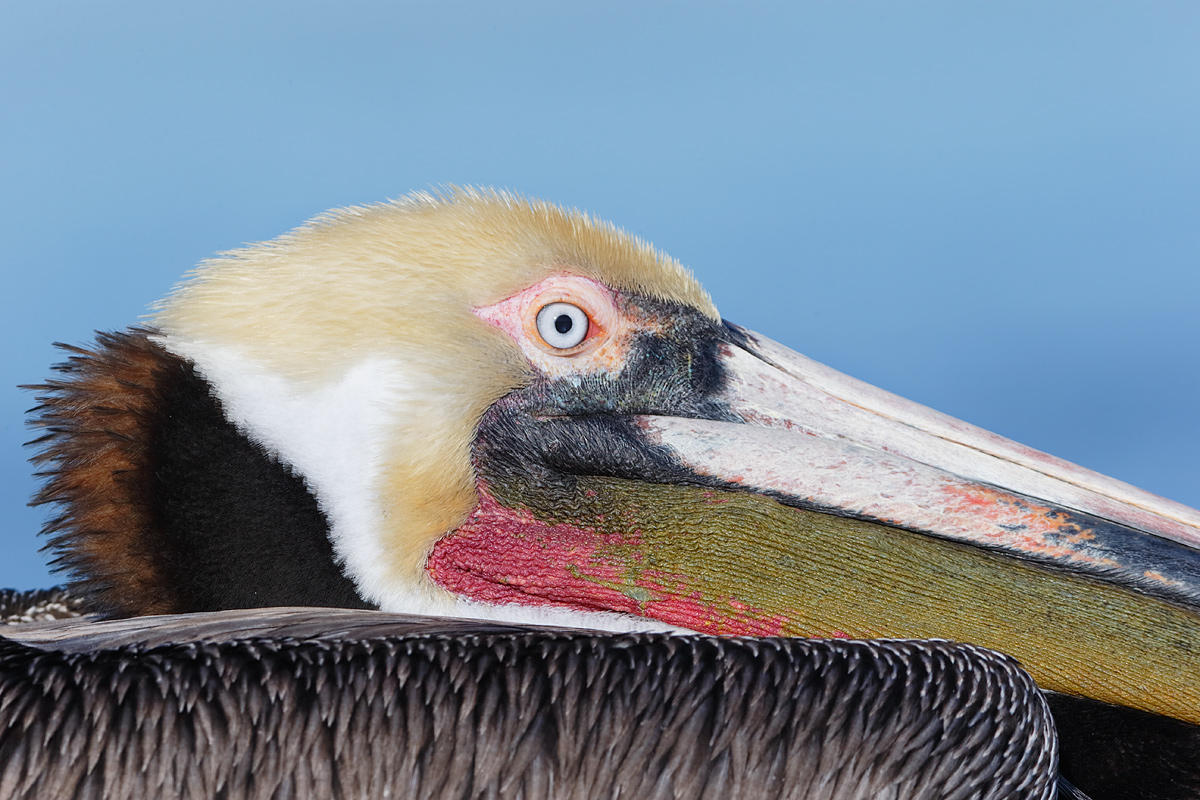
|
|
This tight image of a resting Brown Pelican was created with the Gitzo 3532 LS carbon fiber tripod, Mongoose M3.6 head, the Canon EF 200-400mm f/4L IS USM Lens with Internal 1.4x Extender, a Canon 1.4x EF Extender III (Teleconverter) (hand held with the internal TC in place at only 560mm), and the Canon EOS-1D X. ISO 400. Evaluative metering at zero: stop: 1/400 sec. at f/13 in Av mode. Central Sensor/AI Servo–Rear Focus AF forward and in front of the bird’s eye active at the moment of exposure. Click here to see the latest version of the Rear Focus Tutorial. Click on the image to see a larger version.
|
Blessed
I am of course doubly blessed to own both of these great lenses and to travel with them regularly to some of the world’s most wonderful bird and wildlife photography destinations.
Don’t Forget
Please don’t forget that I had my 600 II in San Diego and used it often with either the 1.4X III or the 2X III teleconverter every day of the trip; it is very rare that I go anywhere without my 600 II….
Your Favorite?
Please take a moment to leave a comment and let us know which of the images here is your favorite. Be sure to let us know why.
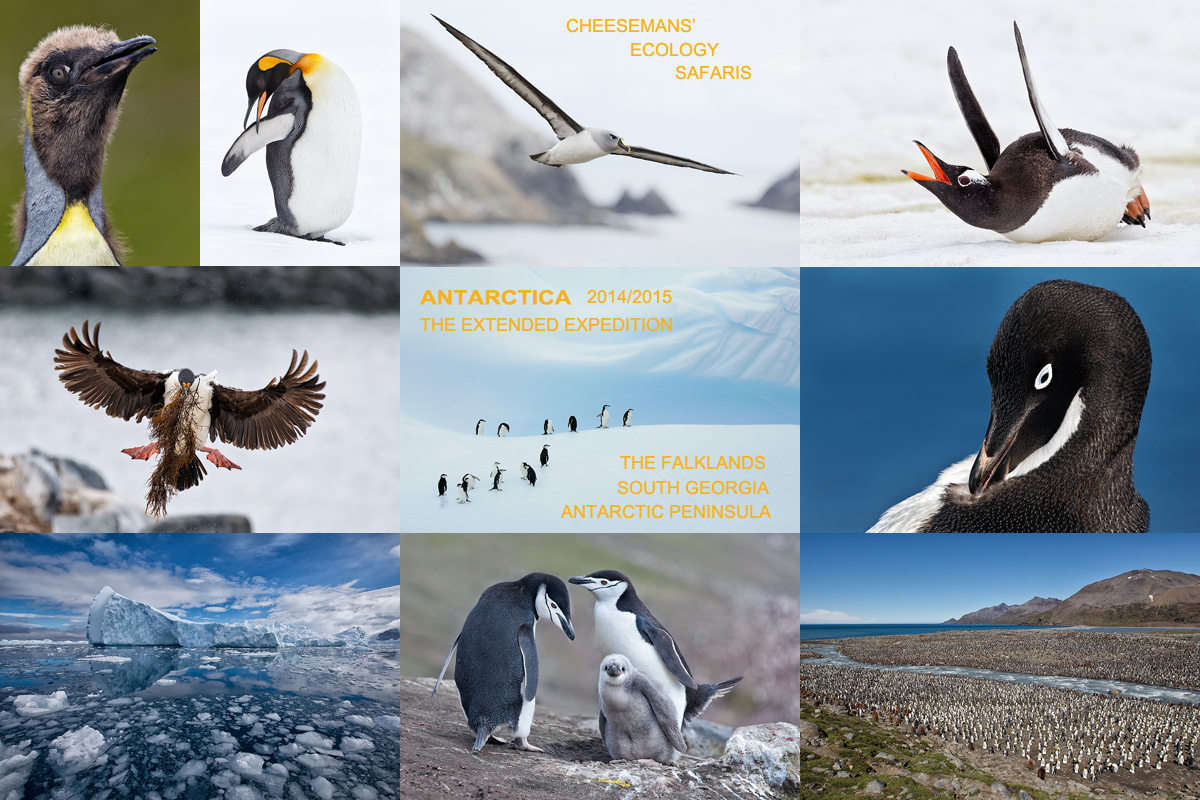
|
|
Breathe deeply, bite the bullet, and live life to its fullest; we all get only one ride on the merry-go-round… Join me on this great trip. Click on the image to enjoy a larger version. |
The Southern Ocean…
There has already been a ton of interest including that from some long time wonderful Happy Camper BIRDS AS ART folks. Mulitple-IPT veteran Michael Viljoen of South Afirca has already committed to making the trip with his son. He and lovely, smiling wife Lyndsey were with me on the memorable and wonderful October 2012 Cheesemans’ South Georgia Expedition. Repeat-clients–I like to call them recidivists–are a good sign that you are doing something right.
Click here for complete details. If you are seriously interested please shoot me an e-mail for the trip link.
Support the BAA Blog. Support the BAA Bulletins: Shop B&H here!
This Bulletin took about 12 hours to prepare
We want and need to keep providing you with the latest free information, photography and Photoshop lessons, and all manner of related information. Show your appreciation by making your purchases immediately after clicking on any of our B&H or Amazon Affiliate links in this blog post. Remember, B&H ain’t just photography!




Amazon
Everyone buys something from Amazon, be it a big lens or deodorant. Support the blog by starting your search by starting your search by clicking on the logo-link below. No purchase is too small to be appreciated; they all add up. Why make it a habit? Because I make it a habit of bringing you new images and information on an almost daily basis.
Typos
In all blog posts and Bulletins, feel free to e-mail or to leave a comment regarding any typos, wrong words, misspellings, omissions, or grammatical errors. Just be right. 🙂
IPT Info
Many of our great trips are filling up. See especially info on the South Florida, Holland, and Nickerson Beach IPTs. Two great leaders on most trips ensure that you will receive individual attention, have all of your questions answered, and learn a ton including how to think like a pro, see the situation, and get the right exposure every time. In addition you will have fun, and make lots of great images. Click here for IPT details and general information.

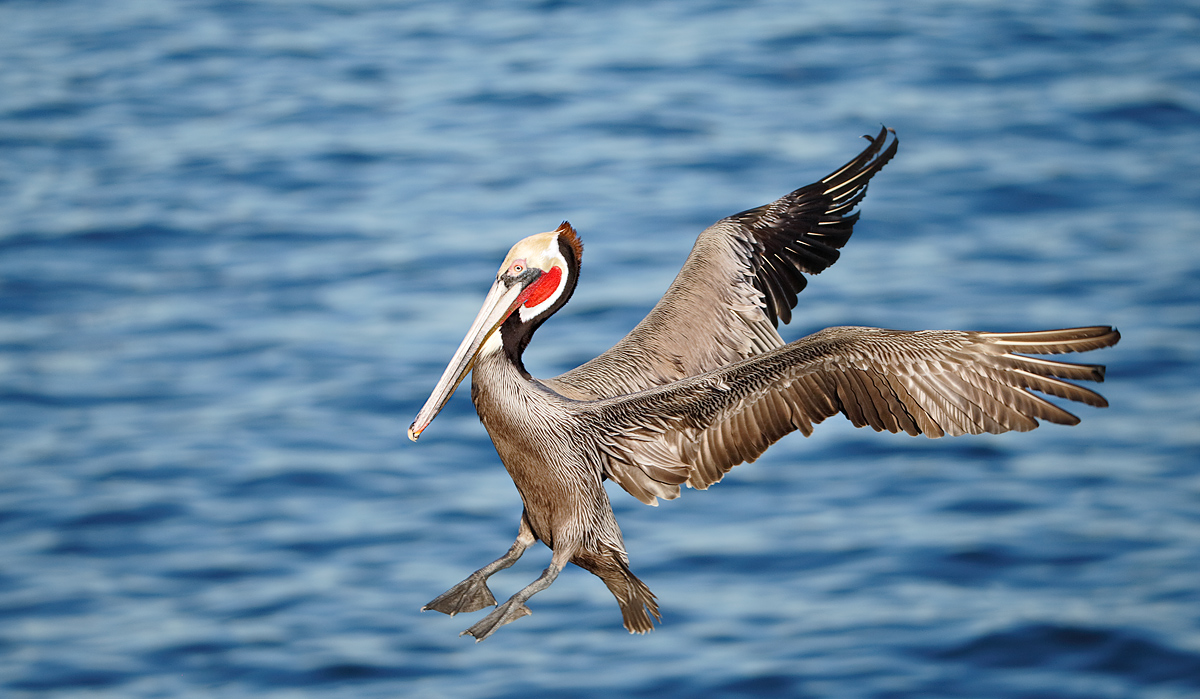















Artie, for a “1.4X” to give you exactly 1 stop less light it would have to increase the focal length by the square root of two, by the laws of physics. My point is none of these specs are accurate to the precision you calculate. So with the external 1.4X attached you have a 280-800 lens.
Interesting. But I am from Missouri, the “Show Me” state. I will do some research in that area and let everyone know. artie
ps: who knows for sure that we are losing exactly one stop of light???
Artie: As you know, the simple geometry leads to this, because the area of a circle is proportional to the square of the diameter. And lens apertures are circles. So if you want to cut the area in half–one stop decrease in light–you need to reduce the diameter by 1 divided by the square root of 2, or 1/1.414…… . This explains the progression of f-stops: f/1,f/1.4,f/2, f/2.8, and so on and on. I think that’s why Canon makes 1.4X and 2X extenders. But I agree with you, who knows that we are losing exactly one stop of light? Not I. But it’s close enough to be useful as a rough calculation for figuring out the effects of extenders on apertures and hence on exposures. Also useful, of course, for figuring out whether the AF on your particular camera will work with a particular lens/extender combination.
I am starting to pack for Tanzania/Rwanda and I am thinking there is no way I would lug the 200-400 lens there in addition to my 600 and 70-200f2.8II with TCs. That is why I won’t be getting one. It would be the best lens I owned that never left the closet. Now if Canon ever brings out the new 100-400….
I will never go to Africa without the 600 II, the 200-400, and the 70-200. No matter what it takes… artie
Thanks Geoff, I appreciate your feedback. I agree that the 200-400 L and 70-200 2.8 II are different lenses when it comes to application. My query to you is if I sell the 100-400 L once I get the 70-200 II will I mess the gap in FL? Is it worth retaining the 100-400 for that? Regards, Sanjeev
On my upcoming trip I will be afield most of the time with the 600 II and the 70-200. I loaned my 200-400 to Alan and Pat Lillich for their upcoming trip to Yellowstone. I do not see the 200-400 as extremely valuable for Florida bird photography…. If I am still not feeling great I would likely do 300 II along with the 70-200. Light weight… artie
Sanjeev: Don’t forget that the 700-200 makes an excellent 140-400 fixed f/5.6 lens with a 2x TC attached. The only downside is somewhat slower focus for fast moving subjects.
Correct, and light, and viable… artie
Thanks Artie for the comparison. Always great to hear first hand actual use opinions on the lenses. I currently have the 600II and 300II but as I mentioned in the comments of the Southern Oceans post, I am seriously considering the 200-400 to purchase before that trip next November.
On my next Southern Oceans trip with Cheesemans’ I will be bringing the 200-400 and the 300 II and leaving the 600 II at home. Two reasons for that: the 300II for flight photography from the ship and as a back-up for the 2-4…
There was a recent forum topic on another website that asked the question what 3 big-white lenses would you want to own if you could own 3 but only 3. There was a lot of varied response, some liked the 800, some the 500, a lot the 600 and a lot the 200-400. My own response was:
1)600II
2)300II
3)200-400with 1.4TC
Those are the lenses that I own. Assuming that the 70-200 f/2.8L IS II is not a big lens. I cannot do without that one…
I also see benefits in the 500II but have never really wanted the 400II or 800 for my type of photography (birds, mammals, wildlife).
Smart thinking and agree.
The main reason I love the 300II is that I can have a super high IQ 600 f/5.6 IS II lens out of it and still be able to carry it on a BlackRapid strap without issue. IF the 200-400 weighed more like the 500II or a little less, I could easily see myself selling the 300II and only have the 200-400 and the 600. However, because of the weight, I personally will likely keep all 3 of these lenses. And of course you have to have the TCs to go with them!!
I own 3 1.4X and 2 2X TCs and bring them all on every trip.
best, artie
ps: If you do go for the 200-400 please use one of our affiliate links if feasible. Who are you going with in November?
Dear Artie, Hope you and James get well soon!
Me too, very much so….
Thanks for the detailed analysis between these two great lenses! Ideally, one should have BOTH 🙂
YAW and agree.
I have the 500 II and the 100-400 L. I am planning on selling the 100-400 L and getting the 70-200 f/2.8 II and use it with extenders.
Good plan.
If one gets the 200-400 L instead, will there be too much overlap between it and the 500 II?
The 500II/2-4 combo is not nearly as attractive a combo as the 600 II/2-4 combo for several reasons, most notably it is a lot farther from 784 to 1200mms than it is from 784 to 1000mms…. artie
Hopefully Artie will respond with his opinion also….I’m sure he will. But until then I’ll give you my thoughts on that decision….
I am here. 🙂
First of all you seem to be deciding between a 70-200 and 200-400 but these are drastically different lenses.
Agree.
One is easy to handhold, can be carried easily on a strap over the shoulder. The second is almost as heavy as the heaviest lenses that Canon makes, can be handheld for short flight bursts but can’t be done for extended periods. Tripod, monopod would be helpful for the 200-400 as it is for the 600 and even the 500 for most people.
Agree.
In the 500II you also have a brilliant 700 f/5.6 lens and a 1000 f/8 lens. In the 200-400 as Artie showed in the posting you have a very versatile 200-560 f/4-5.6 lens without having to mess with TCs. Or you can have a versatile 280-784 f/5.6-f/8 lens if you leave an external 1.4TC on the back and flick the internal in and out.
We are on the same page.
The big difference between your 500 and the 200-400 is at any equivalent focal length, the 500 can be 1 stop better than the 200-400. That is where the 500II still has the big advantage.
An advantage in speed but not an advantage in versatility, in being able to change the framing in virtually no time at all….
I think ideally the 600II is better paired with the 200-400 but I could still easily see a use case for owning both the 500II and the 200-400 for different scenarios. Not sure I’d pack them both on a single trip though??
Agree. See my similar comments below.
As to the 70-200 f/2.8 IS II, that lens is awesome (I use it also) and really is in another category compared to the 500II and 200-400 as far as use case is concerned.
Hope this helps a bit.
artie
Hi, Artie. I had the same kind of cold you did at Christmas, so you doubly have my sympathies and wishes for a speedy recovery. Better now than in Japan!! I agree with Kevin that you were wide open (f/2.8). The weather appears to be sunny–there’s a small shadow cast by the bird’s bill on the pouch–and at ISO 400 with a light subject I think you’d be at about 1/4000, even with + 1/3. The crop itself isn’t amazingly sharp until you remember that it’s a 200% crop, and then it IS amazingly sharp. I’m having a hard time picking a favorite image. I love the first, with that fat content pelican on its rock, and the screaming western gull, and the beautiful colorful double-crested cormorant, and the tight head shot of the pelican…I can’t decide! We get the pelicans and cormorants here in the east but they never are as colorful as yours from La Jolla.
Thanks for the really helpful analysis of the pros and cons of those two lenses. If it were between the 200-400 and the 600 f/4L IS II, which are much closer in cost and weight, THEN which would you choose?
Good on the f/2.8. See my comments on the ISO below :(. If you like birds, the 600II is the no-brainer choice over the 200-400 for almost everyone.
I visit San Diego when I do to take advantage of the bright breeding colors. East coast pelicans never look like that. The west coast birds are a different race…
Artie I think you were at f/2.8 because it doesn’t take long before we see some loss of sharpness.
Agree to some degree.
Being that you were at 400 ISO which would make it faster I’ll guess 1/1250 maybe even a little faster.
Way too slow considering that the sun was out…. Note: ISO 400 was a typo. ISO 200 was correct… But still way too light.
I have the 300 11 and when I first got it I was shooting wide open and didn’t,t even step down and was surprised at how quick I would lose sharpness on the subject. I thought I needed that to blur the background. Then I would take pictures at 5.6 or f8 and get better sharpness on the subject and still retain some blurred background depending on the distance from the subject.. Harder to tell with the sky as background
Blue water…
but just looking at feather detail I will go with 2.8.
f/2.8 is indeed correct. I rather like the look and the super smooth background. I am not bothered at all by the fall-off in sharpness and am not sure how much better it would look at f/5.6 or even f/8. Just checked the d-o-f. At f/2.8 at 14 feet, d-o-f in front of the point of focus is .6 inches, 1.2 inches at f/5.6, and 1.8 inches at f/8. As pelicans are fairly large birds I would guess that the distance from the eye to the side of the body would be at least 8 inches… That would not at all be covered by f/8.
We’ll the 200-400 would ad a lot of versatility but the weight would be the deal breaker plus the cost difference.
I agree for some folks.
Don’t think people realize how heavy these lenses are. The 600 would hopefully be my next.
That is my #1 bird photography lens. I leave it at home only on rare trips….
Artie take care and get better soon.
Thanks. I need to. I leave for the South FLA Composite IPTs this Friday. Yikes…. later and love, artie
ps; when you are ready to buy your 600mm II, please remember to use one of our affiliate links; web orders only 🙂
Get well soon, Artie.
Have you considered the wisdom of immersing yourself in tubfuls of ice cubes?
No wonder you’ve got a COLD.
Just kidding ya.
Actually the ice baths strengthen your immune system. I had not done any ice baths in San Diego…. Additionally, long flights trash your immune system…
First, I would be really interested to see a reference to the published, peer reviewed, properly designed and conducted, scientific research papers or trials that show this.
(That excludes fanciful claptrap from quackacemics on the internet).
Hi Rupert, The proponent is Jack Kruse, a neuro-surgeon. Here is a link to his first blog post on Cold Thermogenesis:
http://www.jackkruse.com/the-evolution-of-the-leptin-rx/. There are many follow-up links on the page.
Here is a list of potential benefits:
Lower body fat
Increase hormone levels
Reproductive fitness!
Fertility
Reverse diabetes
Cut food cravings
Kill fat permanently
Strengthen adrenal function
Fix thyroid disorder
Super immune function
Deep sleep
Pain management
Sense of well being and better attitude
Cut visceral fat first
Promote cessation of eating disorders
I can personally state that when I am ice-bathing regularly I sleep far better and longer. My blood sugars are lower and I need less insulin for the same amount of food. I feel great, am never hungry, have none of my usual carb cravings, and have lost about 9 pounds.
Here is the short story: 18 years ago I was downhill to the grave. I had had high blood pressure since I was 13, was told that I have advanced coronary artery disease, and in the mid-1980s, experienced about 12 serious bouts of atrial fibrillation annually, had a bad ulcer, and became a Type II diabetic. I was on every heart medication known to mankind.
Now, after following a protocol suggested by a chiropractor/nutritionist doctor friend from San Diego that included dietary changes, weaning myself off all the heart meds, a program of supplements–Cliff Oliver healed my ulcer for good in three months with three supplements, meditation, exercise, breathing exercises, and most recently, cold baths.
18 years later my health has improved several thousand per cent by any standards. My blood pressure averages about 135 over 65 and my A1C averages about 5.4. I would trust Cliff with my life over any 10 western medicine doctors you could turn up. If you would like the complete story, I’d be glad to send you or anyone else my Health Basics file via e-mail. Pardon me for making an assumption but I am fairly sure that you would be quick to label both Dr. Kruse and Dr. Oliver as “fanciful claptrap from quackacemics.” You can learn more about Dr. Oliver here:
http://www.thecenterforbalance.net/page0/page0.html
Second, how on earth do get a 600mm, a 200-400mm and a 70-210mm (as well as all the converters and other bits that are needed) onto a long haul flight?
I described that in a post on my Africa trip. It was a challenge but was well worth it.
Even if you wanted to or deemed it necessary.
Actually both.
I travel to Africa fairly frequently and can manage to blag a 500mm, a 70-210mm, 3 converters and 2 bodies (plus other bits) onto the flight in one roller case as carry on because it will fit into the overhead locker but getting 3 big lenses and 3 bodies on boggles my mind. Why would you anyway?
So that I can make the best picture in all situations,
By the time you decide which combination to use the action would generally be long over.
That is a judgmental and inaccurate statement.
And there simply isn’t room on the vehicle to have all that stuff to hand.
Says who? Apparently you are going on the wrong photographic safaris. On our trips each photographer has a whole row of seats to themselves. I keep my 600 II in one of the great new lens bags hung on the back of the seat in the row in front of me, usually the driver-guide’s seat. The 200-400 and the 70-200, each with a camera body attached, rest in my big Think Tank rolling bag and were easily accessible.
You might consider being a bit more open and a bit less judgmental. You might actually learn something. 🙂 later and love, artie
It was very interesting to hear your thoughts. As I understand it, given a choice of the 300 or the 200-400, you’d take the 200-400 which as you put forth here makes a lot of sense.
That would be correct for most trips and locations. But not all…
Let’s mix it up a little. If you are taking the 600 for extra reach, which would you take as a second lens, the 300 or the 200-400?
My first choice would be the 200-400 for most trips. But, if doing lots of flight photography from a ship I’d love to have the 300 II aboard… So the answer is both if at all possible. I got the 600II, the 200-400, and the 70-200 plus 3 camera bodies and a load of TCs to Africa…
In overcast situations (it is winter now where I am) is the 200-400 fast enough with both 1.4 converters as you are now f8 wide open?
Yes, with good technique and possibly higher ISOs….
thanks for asking, artie
Artie — Seattle – How could you!! Northern Californians for SF!!
Sorry-done deal. I was two for two. Now rooting for Peyton….
Sorry to hear about your cold. I hope you get better soon!
Ideally the 1.4X should actually 1.414… (the square root of two). Putting two “1.4X” converters should get you exactly 2X. Because of marketing constraints and engineering tolerances your results could vary. It would be interesting to compare three images 1)the 200-400 @ 400 with a 2X converter and 2)200-400 with internal and external 1.4X and 3) the 800 mm lens.
Thanks and me too. Where did you hear the 1.4X TCs are actually 1.414? I am not big on doing comparisons :). And I no longer own an 800. Plus, there are too many variables….
f2.8 @ 1/6400 for the pelican 300mm photo
Correct. You seemed quite confident. Did you see the EXIF? artie
ps: I just realized that the IS) 400 was a typo. It should have been ISO 200. There is not 1/12000 sec. shutter speed available–that’s why I had to go down to IS) 200 to shoot at f/2.8.
Sorry to hear the cold developed. I find that lots of sleep in the first couple of days is key to reducing the severity of a cold. Let’s hope a cold now provides some immunity for Japan!
I’m looking forward to the answer to the sharpness question, I’m generally terrible at judging raw capture sharpness. I would call this OK but not great. The rim of the eye and white feathers look slightly softer than best case. And this is sitting back about 6 feet to compensate for the 200% display.
Typos:
“Weight: the edge here goes to the 300 II that tips the scales at 5.19 pounds as compared to the heftier 200-400 that weighs a hefty 7.98 pounds. That is more than 2 1/2 pounds more than the 200-400 and only about 2/3 pound lighter than the 600 f/4L IS II.”
Second sentence should be “more than the 300 II”.
“I must give the overall nod to teh 200-400” … “nod to the”
And a typo of my own, “first could of days” should be “first couple of days”. I’m a terrible typist, I have to look at the keyboard, and the autocorrection often messes me up. (Yep, 33 years as a software engineer and I never became a real touch typist.)
Fixed that too! artie
Thanks Alan. I was in bed resting last night for 10 hours and have taken 3 one hour naps today… As for the 200% crop un-sharpened image, to my eye, it looks razor sharp.
Thanks for the typo notes. I actually re-crafted the stuff on the weights…